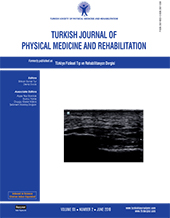Backward walking alters vastus medialis oblique/vastus lateralis muscle activity ratio in females with patellofemoral pain syndrome
Patients and methods: Between September 2016 and December 2016, a total of 40 female participants (mean age 20.9±1.9 years; range, 19 to 26 years) were included in the study. The participants were divided into two groups as those with unilateral PFPS (PFPS group, n=20) and healthy controls (Control group, n=20). Surface electromyography (EMG) from VMO and VL muscles were collected during FW and BW at a speed of 3 km/h using the Myomonitor® IV EMG system.
Results: There was a significant increase in the EMG activities of the VMO and VL muscles during BW compared to FW in PFPS and healthy groups (p=0.001). During BW, the VMO activity of PFPS was significantly higher than the healthy controls (p=0.013) without any significant difference in the VL activity (p=0.916). During FW, there was no significant difference in the VMO and VL activities between the groups (p=0.348 and p=0.705), respectively. The VMO/VL ratio of the PFPS group during BW was significantly higher than the FW ratio (p=0.001) without any significant difference between BW and FW of the healthy group (p=0.841). During BW, the ratio of the PFPS group was significantly higher than compared to the healthy controls (p=0.016) without any significant difference between the groups during FW (p=0.100).
Conclusion: Our study results show that BW increases the VMO muscle activation and preserve the ideal VMO/VL ratio in PFPS patients. Therefore, clinicians should consider BW training when developing rehabilitation programs for females with PFPS.
Keywords : Backward walking, electromyography, knee muscles, patellofemoral pain

















